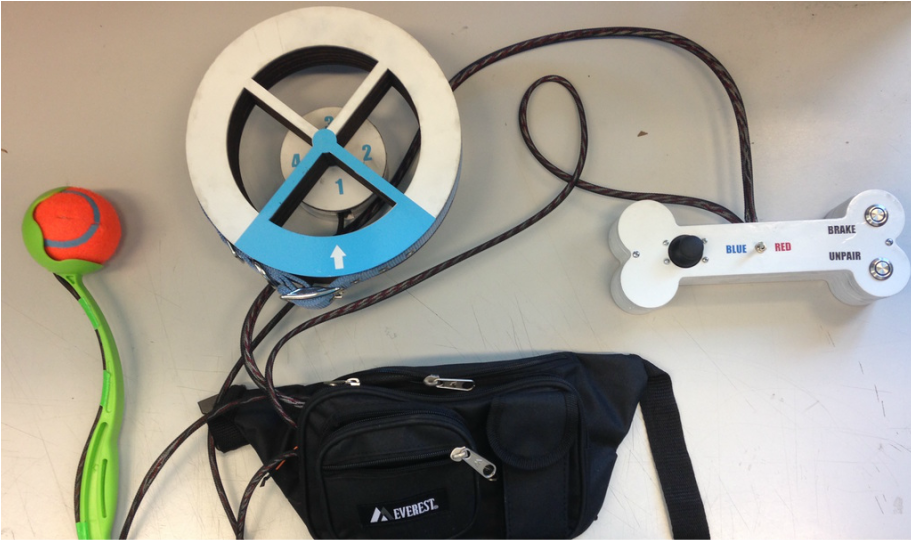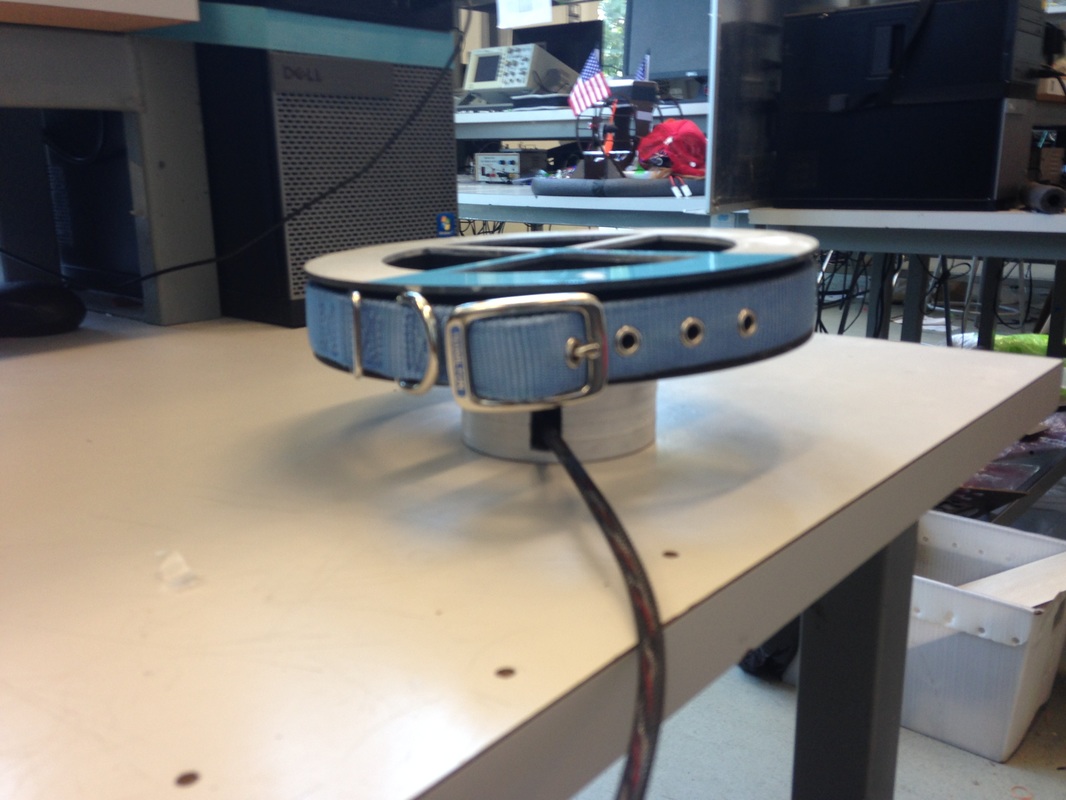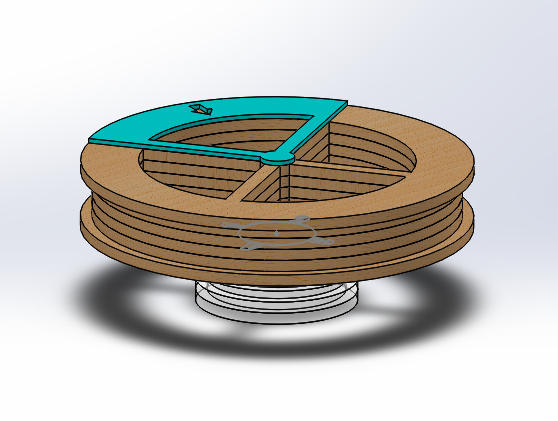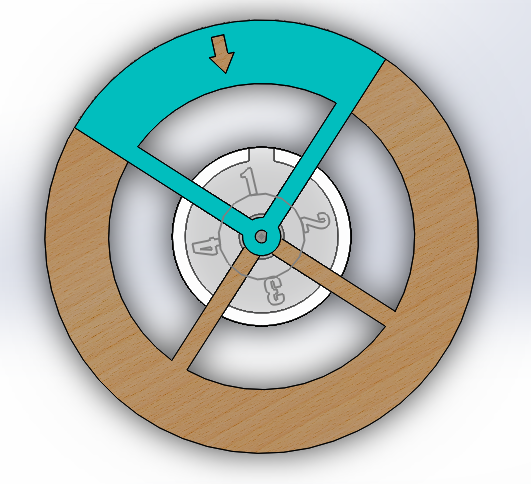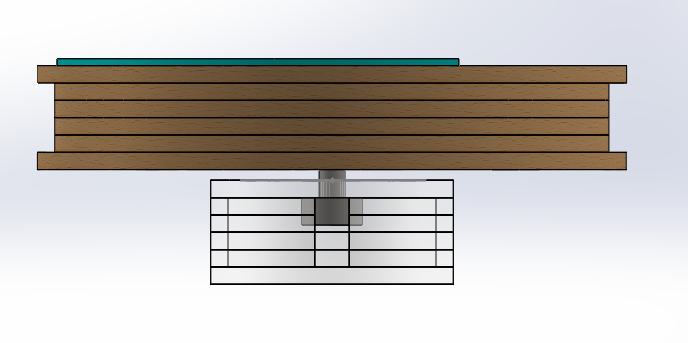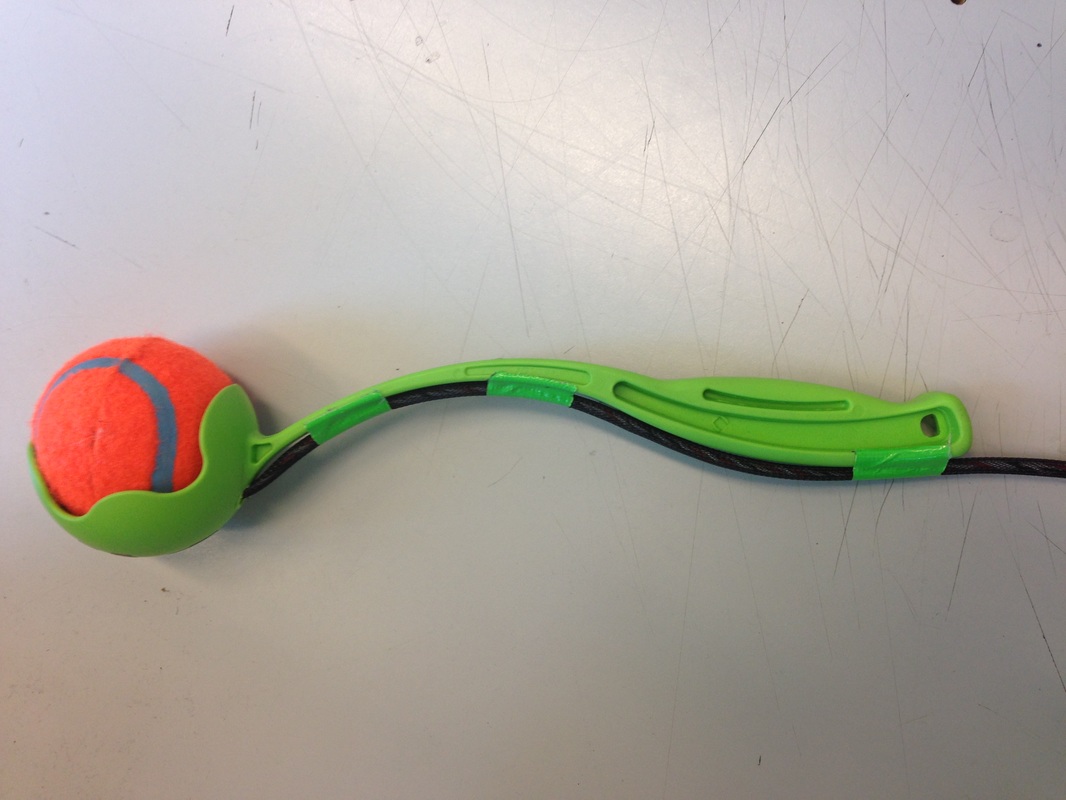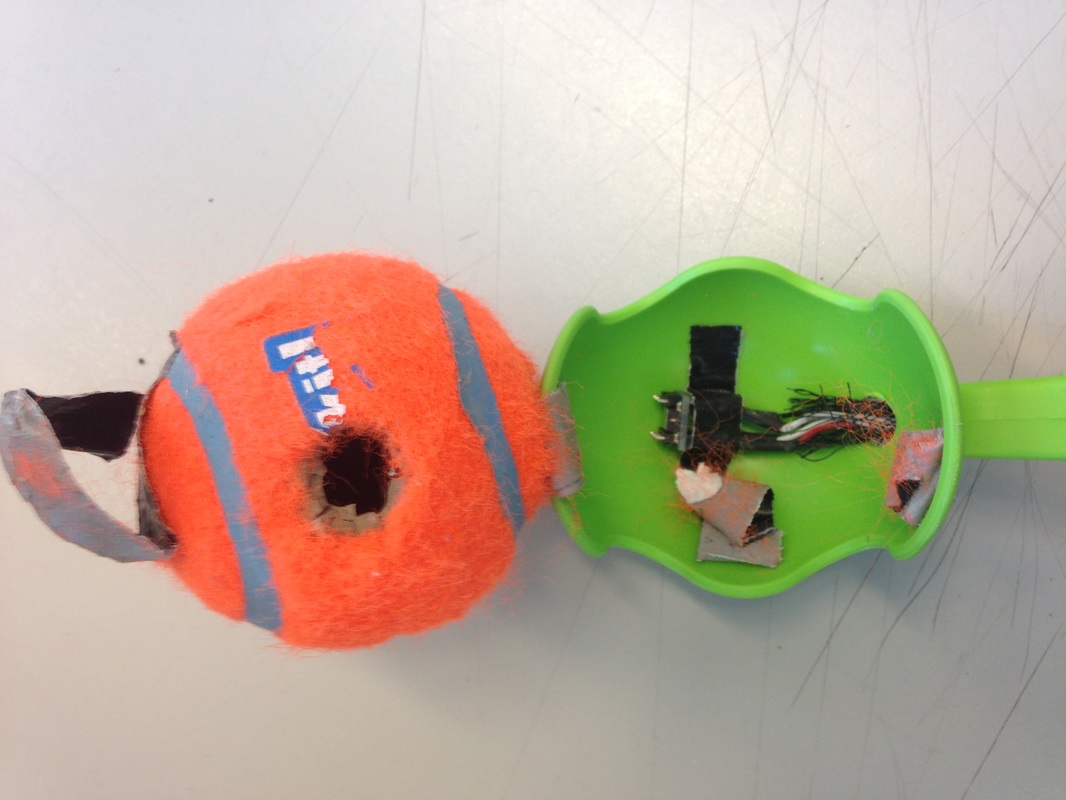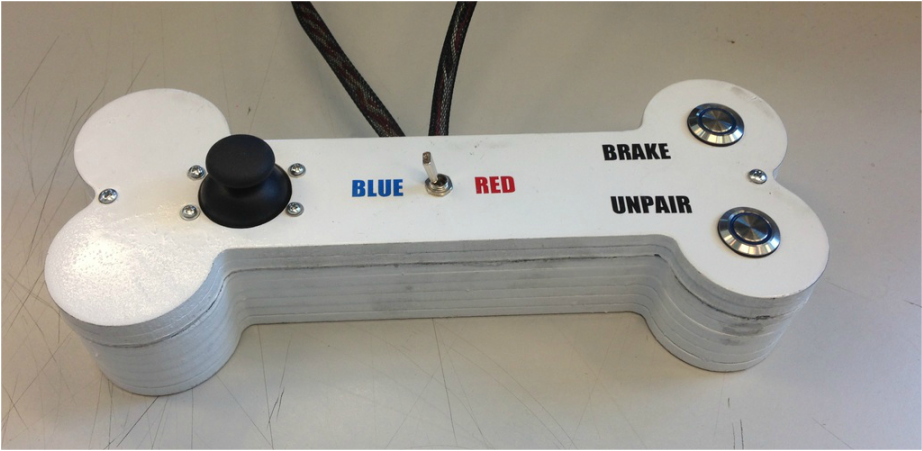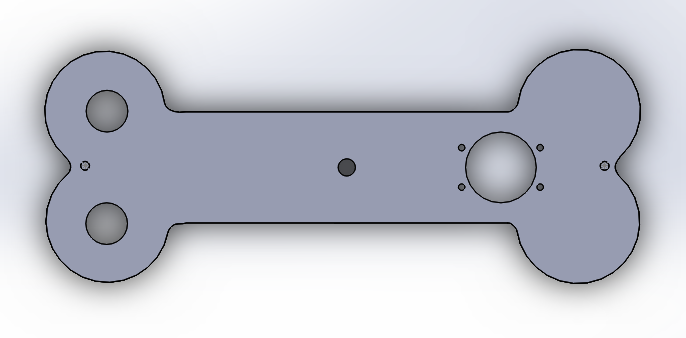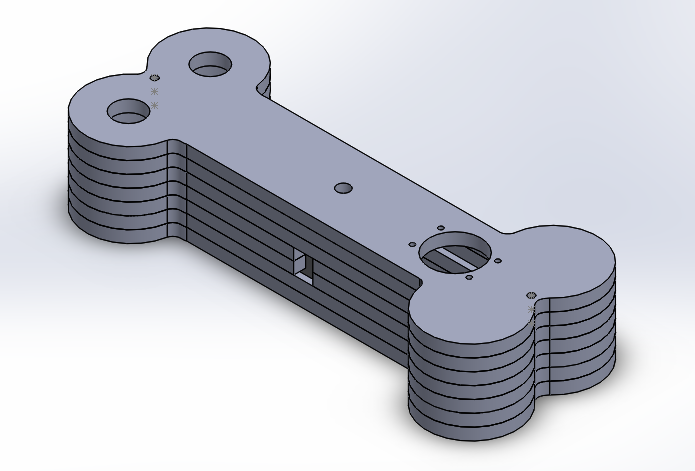General Remarks
We wanted our PAC hardware to reflect our dog-themed LOBBYIST, so we had the user of our PAC fill the role of a dog owner. We separated our PAC into three functional components: a dog collar LOBBYIST selector, a tennis-ball-throwing activator, and a dog bone controller. Each piece of hardware was tethered to a central fanny pack to be worn by the user. The fanny pack contained the battery, the PIC16F1788, and all of the circuitry. We tethered and hid all wires in braided cable sleeves.
Dog Collar LOBBYIST Selector
Final Material: Duron/Masonite
The dog collar LOBBYIST selector allows the user to choose which LOBBYIST to pair with by rotating a dog collar attached to a potentiometer. The dog collar was attached to the potentiometer through laser-cut duron wheels that were glued together. Due to the larger size of the top and bottom duron wheel, the dog collar remained fixed in place. We press-fitted the duron to the potentiometer and used small shims to reduce any slop between the duron and potentiometer. The potentiometer was then fixtured to a cylindrical housing to hide the electrical wires. The housing was made of duron and contained a rectangular cut-out to tether the electrical wires to the fanny pack. We spray-painted the duron white in order to add a nice finish.
Tennis-Ball-Throwing Activator
Final Material: Plastic
The tennis-ball-throwing activator allowed the user to pair with the selected LOBBYIST. The activator was made from a purchased Chuckit! tennis ball laucher. We hid an accelerometer inside the tennis ball to sense when the user "threw" the tennis ball. We then tethered the launcher to the fanny pack.
Dog Bone Controller
Final Material: Duron/Masonite
The dog bone controller is what allows the user to control the LOBBYIST. The primary method of control is through the use of a joystick, which we mounted on the left hand side of the controller. The controller also contains a switch that allows the user to select the blue or red team. On the right hand side of the controller, we used buttons to manually unpair or stop the propellors from moving. The buttons contained LEDs, which were illuminated when a pair was currently active. The housing for the hardware was constructed from laser-cut dog-shaped duron. With the exception of the top piece, all layers of the dog bone were glued together. In order to disassemble the controller if need be, we fixtured the top piece to the other layers with two screws on either side of the controller. We spray painted the controller white to create a nice finished appearance.
